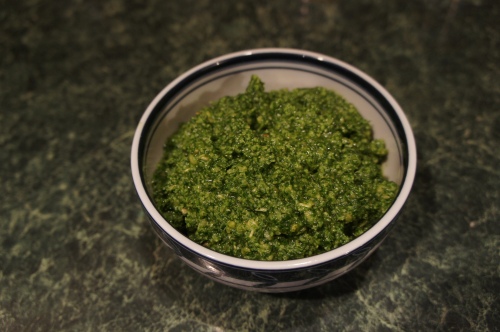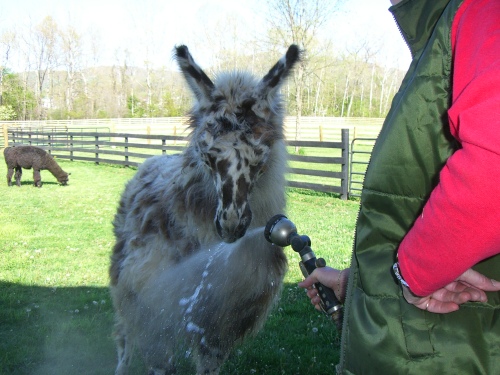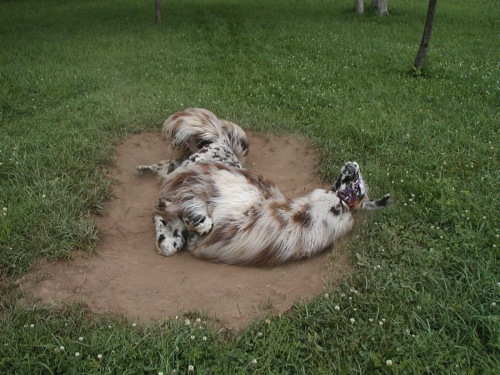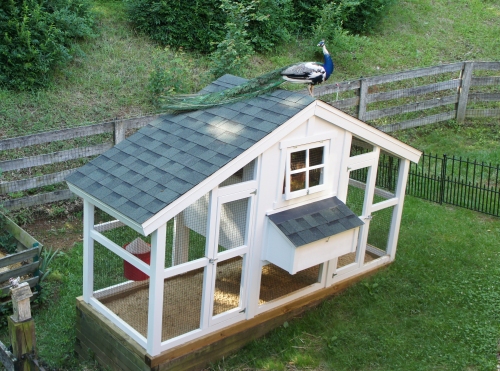If you live in the Northeastern U.S., you may be familiar with the number 1, most hated, invasive weed in the region, Garlic Mustard. It is a member of the mustard family, but has a distinctive garlic aroma when the leaves are crushed.

Garlic Mustard in the Wild
This weed is a non-native plant that was introduced from Europe back in the late 1800’s as a culinary herb. But it has gotten out of control and is taking over our woodlands, and strangling out our native plants. As a result, many communities are hosting Garlic Mustard Pulling Parties, where people are encouraged to gather for the day to yank out these pesky plants by the wagon load.
I didn’t know that you could eat Garlic Mustard until I recently saw a recipe for Garlic Mustard Pesto. Apparently all parts of the plant are edible, to include the sweet tasting flowers and the tap-root, which resembles the flavor of horseradish. Having lived for a few years in Italy, I am an aficionado of Italian Pesto; the traditional recipe using basil and garlic. And since we have patches of the Garlic Mustard growing exuberantly along the fringes of our woods, I decided I would reduce the infestation by eating some of it. You know the old expression, “If you can’t beat it, eat it.”
I checked out a few recipes online and picked bits and pieces of several recipes to come up with a recipe that suited my taste. I prepared it for the first time last night, and it was surprisingly delicious. I’m going to show you how I made it.

A mess of greens, as we say in the south, and my sous chef, Bayley
Ingredients (serves 4-6)
2 cups (packed) garlic mustard leaves. Pick greens from an unsprayed area and make sure you wash them well.
4 ounces pine nuts
3 tablespoons fresh chives, chopped (or 2 tablespoons wild spring onions)
4 ounces extra virgin olive oil
16 ounces penne pasta
3 ounces finely grated Parmesan cheese (Parmigiano Reggiano is preferred)
Salt to taste

Ingredients for Garlic Mustard Pesto
Directions
I started by picking off all the leaves and tossing them in a sink full of water. After swishing them around really well, I scooped them out by the handful, and squeezed all the water out of the leaves. I packed them really tight into a measuring cup.

You need two cups of firmly packed leaves.
It was about now, that I realized I didn’t have any chives. Well, I thought, this recipe is all about “the wild thing”, and we have plenty of wild spring onions sprouting everywhere, providing the llamas hadn’t eaten them all. (Our llamas love feasting on spring onions, as evidenced by the miasma of onion stink on their breath). So I grabbed my scissors and headed down the hill to harvest a clump. I had read a while back that the green tops of the wild onion were tasty in recipes, but to scale back on the amount, as they have a stronger flavor than the domestic variety.

Wild spring onions. Use only the green tops.
I had no idea what I was doing, but I decided that I’d go for 2 Tablespoons of the wild onions instead of the 3 tablespoons of chives. I minced them finely and tossed them in the food processor along with the 4 ounces of extra virgin olive oil and ran the food processor until the greens were finely chopped.
Next I added the pine nuts and processed the mix until it had the consistency of a paste.

Add 4 ounces of pine nuts.
At this point I transferred the mix to a mixing bowl and stirred in the parmesan cheese. I thought the pesto was a little too thick, so I added another tablespoon or two of olive oil until the consistency was right, and tasted it for salt.

Garlic Mustard Pesto.
WOW! Now, I must admit, I was prepared to hate this stuff. But, boy, was I surprised. It was delicious. It tasted a lot like traditional pesto, but it had a little zing. The garlic mustard leaves by themselves remind me of arugula, a little bit bitter and peppery. And this flavor came through very subtly in the pesto.
Now I couldn’t wait to boil up the penne and enjoy this taste of the wild.

Dinner is served.
I’m glad I don’t have to hate those pesky weeds nearly so much. Now I just need to find a way to love dandelions.
Feel free to give this a try, and let me know what you think.
Recipe
Ingredients (serves 4-6)
- 2 cups (packed) garlic mustard leaves. Pick greens from an unsprayed area and make sure you wash them well.
- 4 ounces pine nuts
- 3 tablespoons fresh chives, chopped (or 2 tablespoons wild spring onions)
- 4 ounces extra virgin olive oil
- 16 ounces penne pasta
- 3 ounces finely grated Parmesan cheese (Parmigiano Reggiano is preferred)
Directions
- Toss mustard greens, chives, and olive oil into food processor. Run processor until leaves are finely minced.
- Add pine nuts and process until it resembles a paste.
- Remove paste from processor and place in a mixing bowl.
- Add Parmesan cheese and salt to taste.
- Serve over cooked penne pasta.
- Sprinkle with additional parmesan if desired.
































